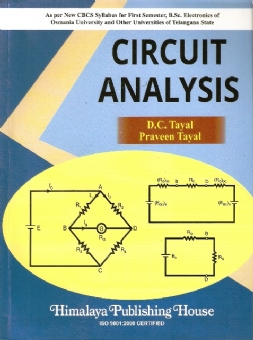Circuit Analysis
Availability :
In Stock
₹ 182.25
M.R.P.:₹ 225
You
Save: ₹42.75 (19.00% OFF)
(Inclusive
of all taxes)
Delivery:
₹ 0.00 Delivery charge
Author:
Tayal, D.C.
Publisher:
Himalaya Publishing House
Edition:
2017
ISBN-13:
9789352623075
Publishing Year:
2017
No. of Pages:
268
Weight:
354 grm
Language:
English











